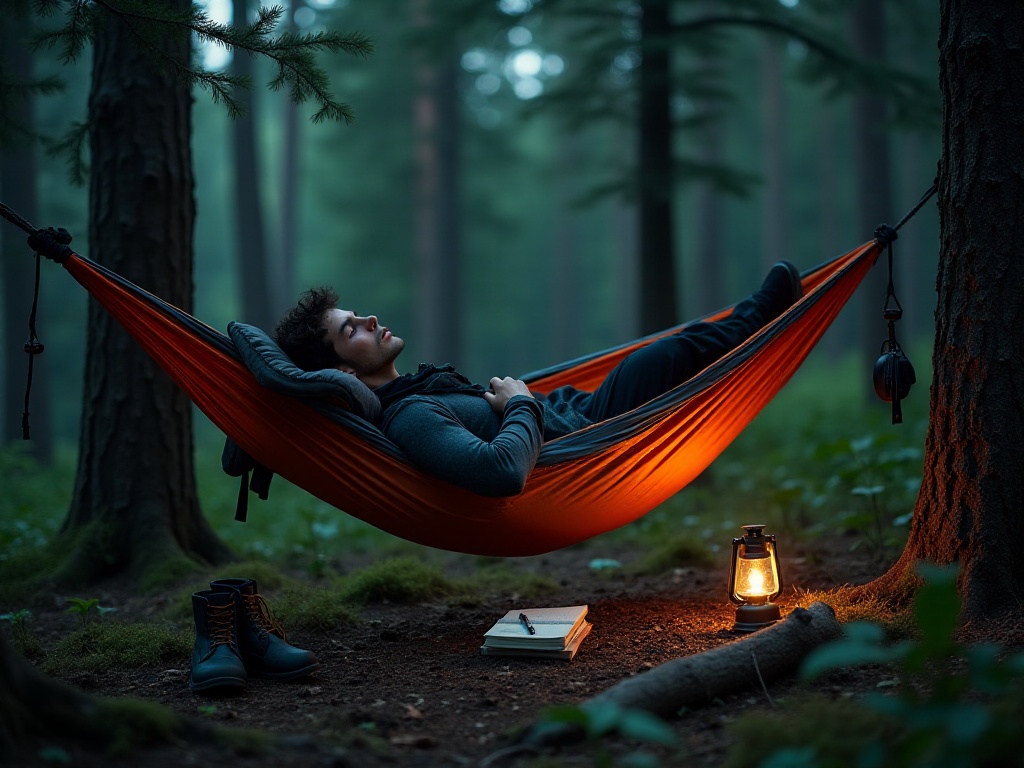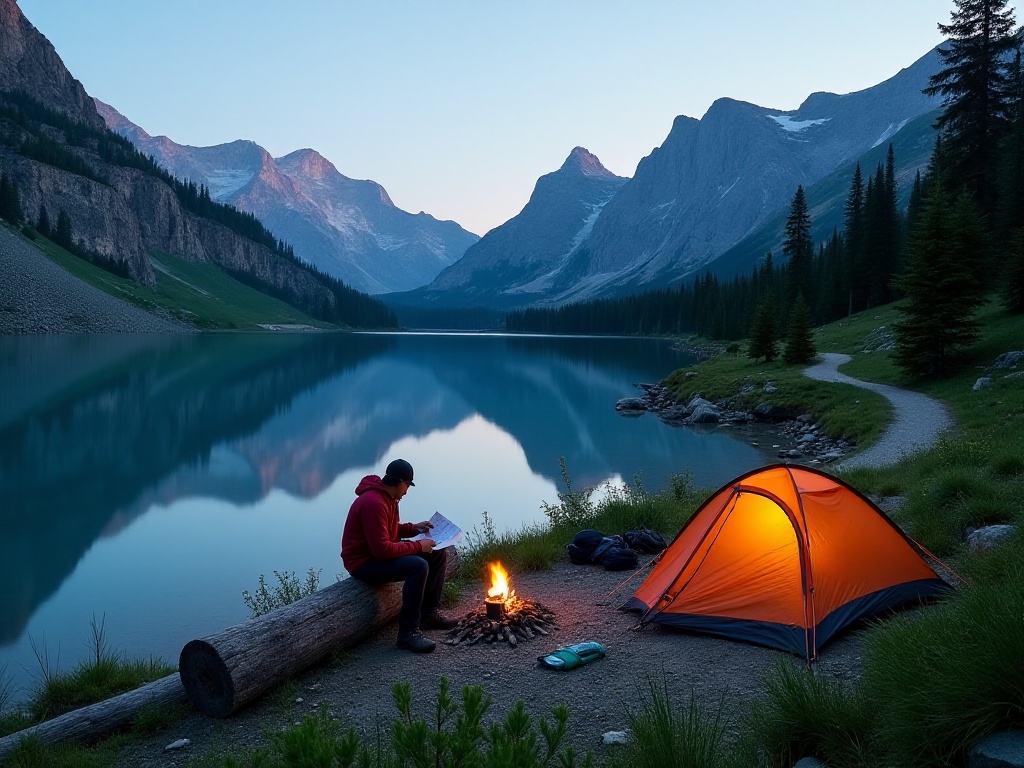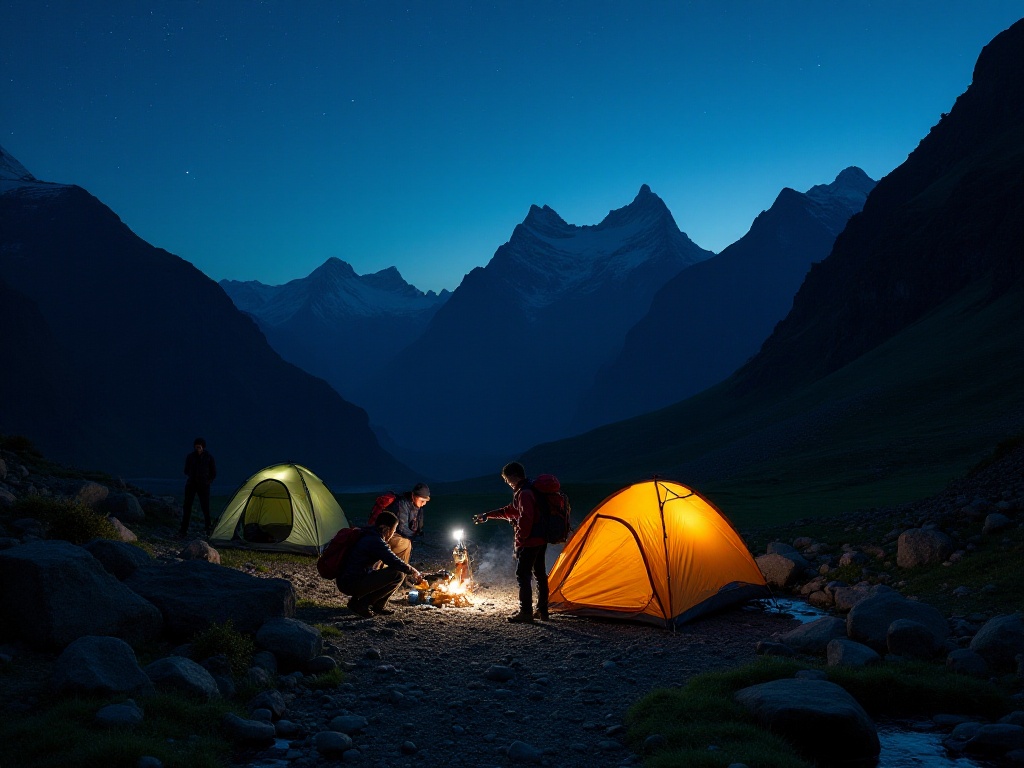Opening Chat
Have you also frequently seen others posting backpacking photos on social media? Do those beautiful landscapes make you want to pack up and go? But then you think your wallet might not support this idea. Don't worry - as an experienced backpacker with 8 years of experience, I'm here to tell you: backpacking isn't actually as expensive as you might think.
Budget Levels
When it comes to backpacking budgets, many people think they need to prepare tens of thousands of yuan. However, based on my years of experience, backpacker budgets can roughly be divided into three levels.
Budget Level
This is the most basic budget level, where you can manage spending around 100 RMB per day in Southeast Asia. Sounds unbelievable, right? But it's actually doable. For example, in Hanoi, Vietnam, you can find hostel beds for 15 RMB per night and authentic Vietnamese pho for 5 RMB per bowl.
I remember my first time in Cambodia, I happily spent a month on a budget of 150 RMB per day. I stayed in a hostel in Siem Reap city center for 20 RMB per night and met friends from around the world. Meals were at local night markets for around 10-15 RMB. Add in occasional tuk-tuk rides and visits to Angkor Wat, and I spent only about 1500 RMB for the whole month.
Comfort Level
If your budget is a bit more flexible, with 2000-2500 RMB per week to spend, you can live more comfortably. At this budget level, you can stay in private rooms, occasionally visit trendy cafes, and participate in some paid experiences.
Last year, I spent a month in Chiang Mai, Thailand at this budget level. I stayed in a guesthouse with private bathroom for around 300 RMB per day. I could take Thai cooking classes, get Thai massages, and rent a motorbike on weekends for mountain rides. This type of travel experience feels both relaxing and fulfilling.
Luxury Level
If your budget is more generous, with 400-600 RMB per day, you can experience almost all the fun activities at your destination. However, note that in high-cost countries like Australia, even this budget would only be considered mid-range.
Money-Saving Strategies
After discussing budget levels, let me share my money-saving experiences from over the years.
Accommodation Tips
Accommodation is always one of the biggest expenses. But with the right techniques, you can keep this cost very low. For example:
When booking hostels, look at reviews, not just prices. Cheap places often have various problems. I learned this the hard way when I booked a super cheap hostel in Manila and found damp bed sheets.
Book in advance, especially during peak season. I met a German girl in Bali who hadn't booked ahead and had to pay 600 RMB per night for a hotel, while I had booked the same type of room two months in advance for only 200 RMB.
Transportation Savings
Regarding transportation, many people might think of hitchhiking. But in Asia, I recommend these methods instead:
Take night buses. This saves both accommodation and transportation costs. I remember taking an overnight sleeper bus from Hanoi to Hoi An for just over 100 RMB.
Use local transportation apps. Apps like Grab are often much cheaper than street taxis. In Kuala Lumpur, Grab typically costs half as much as regular taxis.
Food Savings
Regarding food and drink, my suggestions are:
Eat at street stalls. It's not only cheap but also lets you truly experience local food culture. In Bangkok, street pad thai costs only 20 RMB, while restaurants charge 60 RMB.
Cook your own meals. Many hostels have communal kitchens where you can cook with other backpackers, saving money while making friends.
Equipment Selection
Backpack Selection
When it comes to equipment, the backpack is naturally the most important. But don't think you need to buy the most expensive one. My backpack cost only 300 RMB and has served me for three years. The key points to consider are:
Waterproof material. Southeast Asia often has heavy rain, so waterproofing is important. Capacity between 40-60 liters. Too big is inconvenient, too small can't fit everything. Anti-theft hidden pockets. This is especially important while traveling.
Clothing Selection
You don't need to bring too many clothes, just remember these points:
Focus on quick-dry clothing. Easy to wash and dry. Mainly dark colors. Don't show dirt easily. Bring one light jacket. Although Southeast Asia is hot, air-conditioned rooms and nights can be cold.
Route Planning
Beginner Routes
If this is your first backpacking trip, I recommend starting with these places:
Thailand: Well-developed infrastructure, mature tourism industry, relatively easy communication. Vietnam: Cheap prices, convenient transportation, abundant food options. Cambodia: Less crowded, beautiful scenery, rich cultural heritage.
Advanced Routes
If you already have some experience, you can try these places:
Laos: Relatively less touristy, beautiful natural scenery. Myanmar: Unique culture, not yet overdeveloped. Philippines: Many islands, suitable for in-depth exploration.
Conclusion
The greatest charm of backpacking lies in its uncertainty and freedom. The size of your budget doesn't determine the quality of your travel; what's key is learning how to get the best experience within your limited budget.
Remember, travel isn't about showing off, but about experiencing different lifestyles. Regardless of which budget level you choose, you can create unforgettable memories if you travel with an open heart.
So, are you ready to start your backpacking journey? If you have any questions, feel free to ask in the comments. Let's plan your first backpacking trip together.




